A place of life, a place of death, a place of rebirth. The ancient city of Karkemish, located near today’s Karkamış and Jarablus, between Turkey and Syria, has a rich memory. It sits on the western bank of the river Euphrates, in an area that was among the cradles of civilisation, and preserves archaeological wonders that reflect centuries of hegemony of the Hittite, Neo-Assyrian, Neo-Babylonian and Persian empires. Its most recent history, on the other hand, tells of a border place at the centre of socio-political fragility in a territory that over the years has been the scene of conflicts between Turkey and Syria. The differences that should be the priceless treasure of modern civilisation have instead been a source of conflict, tension and divergence that have resulted in bloodshed. Is it pleonastic or utopian to believe or hope that differences can trigger peace? The project conceived and completed in the ancient Hittite capital prompts a profound reflection on these lines. The reference is to a choral, networked operation that led to the creation of a special installation of the Third Paradise. A symbol of hope, of union, of transformation, of synthesis between opposites.
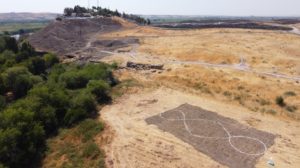
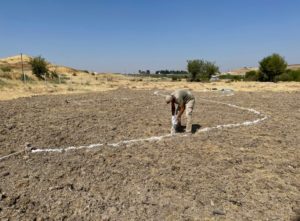
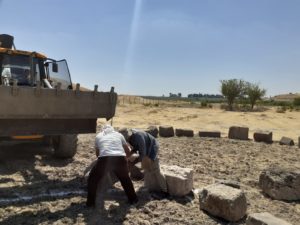
The behind-the-scenes
Since 2011, the University of Bologna, together with those of Istanbul and Gaziantep and under the direction of the archaeologist and professor Nicolò Marchetti, has conducted annual excavations in Karkemish, bringing to light what is considered one of the most important archaeological areas in the world. It is a joint Italian-Turkish project that has seen the active participation of local authorities, the population and the Sanko industrial complex. In short, teamwork, community work. The mission has laid the foundations for a new project: the metropolitan municipality of Gaziantep, in the figure of the mayor Fatma Şahin (the first and only female metropolitan mayor in the country), asked Marchetti’s team to create a garden in an area to be defined near the archaeological area. “The request – said the professor – was to create something designed with an Italian sense of taste and style. We welcomed the garden proposal enthusiastically, also because the Ministry of Foreign Affairs, which has co-financed and sponsored the expedition, has asked us to use part of the budget in a ‘green’ way”.

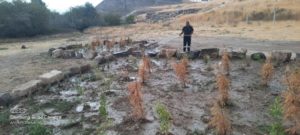
The participation of Pistoletto
The archaeologist decided to involve Michelangelo Pistoletto in the project: “I asked the artist if he wanted to contribute – explained Marchetti – and he immediately responded to the appeal, understanding its importance. He has once again proved to be an incredibly generous person. In fact, my proposal was not to create a simple garden, but a Third Paradise that would include some greenery, i.e. plants of various types, including medicinal ones. Pistoletto first of all identified the most suitable area for him to carry out the work from among some possible locations proposed by us, giving life to the initiative”. The choice fell on an area near the groves along the Euphrates on the edge of the archaeological park.
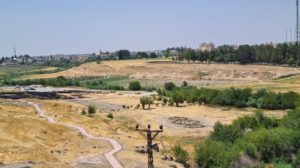
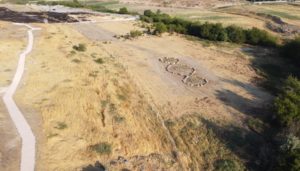
The installation
The work was then built where the artist from Biella had suggested and will be officially unveiled next spring. While awaiting the presentation, Marchetti has already composed the Third Paradise with ancient stones, quarried in the tenth century AD, but coming from Roman and Hittite levels. “The idea – explained the archaeologist – was to use these stones in a culturally representative way. In the work of art, blocks of white limestone and black basalt alternate: a chromatic research which was typical of Hittite architecture and which specifically reveals an extraordinary temporal stratification between Romans (limestone) and Hittites (basalt)”. The loops of the 30-metre-long representation of the sign-symbol have been planted with medicinal plants such as rosemary and lavender on the inside, with room left in the centre for trees and bushes.
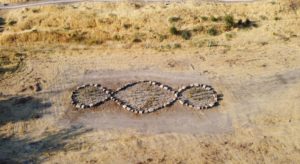
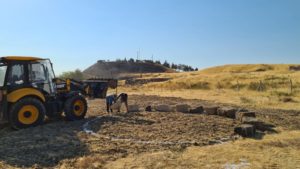
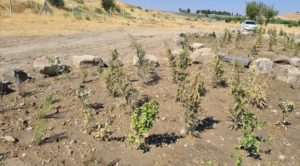
Marchetti’s comment
“The project – he specified – is a source of great personal satisfaction, starting from Turkey’s request to produce a piece of Italian beauty in their territory. In addition to that, being able to count on the contribution of the greatest living Italian artist was very significant and opened a further dimension. The result is emblematic: when visiting the work, there is a sense of calm, of intensity. Over the years these places have been the scene of brutalities, and this peace installation does not only represent a contrast, but the evolution that we all hope for. The Third Paradise, for me, is a symbol of hope, it is not a rigid format, but a movement of peace and integration. Pistoletto has spread his sign-symbol throughout the world, managing to convey a profound message, it is as if he had created small boats that now flow of their own accord in unexpected directions”.
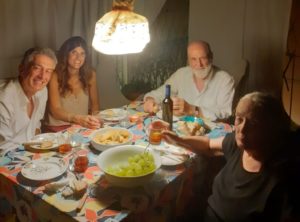
The reflection of Michelangelo Pistoletto
“Karkemish is an extraordinary place – said the founder of Cittadellarte – and the right one to host the Third Paradise, a symbol that pacifies opposites, heals differences, promotes new models of participation in life by resolving conflicts, activating responsible practices that pacify us and give us the right to belong to our planet guaranteeing equal dignity to all the species that inhabit it. The Third Paradise has an ancient and beautiful shape, it is a work of art in itself. But for it to live, it must be activated. This is why ours is a ‘common’ project, which involves many diverse yet firmly connected organisations. In Karkemish, the Third Paradise becomes a sort of ‘hortus conclusus’. Made of stones and 30 meter long, it ‘protects’ the plants in its inside, including medicinal plants along the outer perimeter. Harmonic plants, which heal the body and mind with their properties. Tenacious plants, which stand the test of time and root easily in the ground. Plants that produce high quality nectar and pollen, highly sought after by bees. A community garden – he concluded – in which all the protagonists of life on Earth participate, recomposing the unique and magical fresco of nature”.

